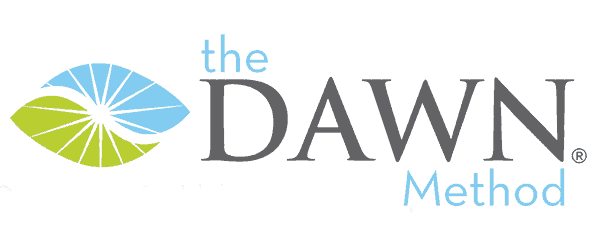I can only imagine how overwhelmed many of you are with all that is happening right now. Taking care of a loved one with dementia is difficult enough without having to worry about how to keep them safe, possibly on your own without the extra help that you may have had before this crisis began.
These are severely difficult times for so many of us. Much of what is happening around us is out of our control and it is easy to become fearful and anxious. I encourage you to be kind and patient with yourself. You are your most valuable resource, so don’t neglect self-care.
Credit: Photo of finches by David Clode on Unsplash
They can’t use mindfulness, but we as caregivers can
In my books and videos I talk about how people with dementia lose the skill of mindfulness. They may be losing that skill, but we who care for them are not. Mindfulness can be a refuge for us in the midst of the chaos happening around us. If we learn to use mindfulness, we can create a safe emotional space for ourselves and our loved one with dementia as well. Here is an excerpt from Dementia With Dignity:
Let’s imagine that at this moment I’m a caregiver spouse. I’m standing in the kitchen and I can hear my husband, who has dementia, beginning to stir in the other room. He’s been napping in his recliner and now I can hear him getting up. I need to do a quick mental inventory and make sure my own mood is in a positive place. Let’s see. I’m worrying about the puddle I found by the hot water heater this morning; the water heater will probably have to be replaced, an expense we can’t afford right now. Can I solve this problem this very moment? No. I called a plumber earlier; now I’m waiting for him to call me back. This is a problem that has occurred and resolution is pending. Right now, there’s nothing for me to do about it. I cannot let it affect my present mood without affecting my husband’s as well. So I picture a box, put my concern into it, close the lid, and imagine putting the box on a high shelf in a closet…
…Now my most consuming worry of all. I am haunted with concerns for the future. I know my husband will need more care, but when, where, and from whom? How will I handle such big expenses and how will I know what’s best? Yet this isn’t my problem today. Today my husband is okay at home with me. When I worry and fret, I’m borrowing from the future and not taking anything good. The time will come to think about this, but the time is not now. So I just set it aside for later and look around the kitchen. My husband wanders in.
What is happening right now? What could I do with the next minutes? This is where my husband lives: in this minute and the next few minutes. He is having more and more trouble recalling what’s happened; he is no longer able to imagine or anticipate the future. I consciously choose to give myself a break and stay there with him, in the moment, just for now. When I make this choice, I am giving myself a vacation from the concerns and worries that I cannot resolve in the present. There is no reason not to. If I am willing, I can tune into the moment along with my husband and do what I can do: look for beauty and happiness in the present.
What do I have right now? Well, I have me. I can turn to him and see the man I fell in love with, the man who proposed to me eight times before I finally said yes… I can smile and hug him… and tell him our story as a memory I know he’ll want to hear.
And I have coffee, as well as the cookies my neighbor dropped by with yesterday. My husband and I can sit together like we have so many times at the kitchen table and watch the finches at the feeders outside the window. As we enjoy our snack, I can tell him more of our memories—of his memories—in bedtime story fashion:
‘Darling, I remember you telling me a story of when you were a boy in Roseburg and your older brother, Grant, decided to drive into town after your parents were asleep and serenade his girlfriend under her bedroom window. Remember Grant? You were fifteen, I think, and he was seventeen. Her name was Emily. It was just before graduation for Grant and Emily, a hot June night…’
When we, as caregivers, are able to pause—to truly stop in our tracks, and look at what is around us—we will find that within each moment lies a multitude of options, entire arrays of opportunities. If the laundry needs to be done, it would make my loved one feel so useful to be able to carry the loaded basket to the washer, or it will give my client a sense of accomplishment to fold and refold the clean towels and socks. Caregiver and companion will accomplish a useful task together, and in doing so will preserve their respective moods.
Mindfulness is a skill and it takes practice. As you learn to practice mindfulness, you will have increased peace and be more able to create peaceful and positive moments with your loved one. And there are other benefits: clinical studies show that people who practice mindfulness heal faster physically, are less depressed and anxious, and may even sleep better.
A Warning—Constant mindfulness can be exhausting
One thing I want to stress—use mindfulness to take occasional breaks with your loved one, but don’t feel that you need to be mindful for extended periods of time. If you do, you will wear yourself out. I tell my families, “No guilt tripping allowed!”
Put aside 10 minutes in the morning as a restorative break for both of you. Make eye contact with your loved one and really smile—let them feel your presence with them, enjoying the moment. You will be surprised at how even one or two minutes of direct attention will pay huge benefits in mood for the rest of the day.
Mindfulness resources for caregivers
If you are interested in learning more about mindfulness, I encourage you to check out the link below that gives a list of free resources that has been gathered by a good friend of mine, Dave Potter. There has been a continuous outpouring of free resources from many mindfulness teachers and Dave has been tracking them on this page. Dave is a licensed counselor and certified mindfulness (MBSR) instructor.
Listening to music can also be an exercise in mindfulness. Below is also a link to a recent blog about mindful listening written by Gideon Waxman of Drumhelper.com. Gideon is a drummer and a mindfulness enthusiast.
List of mindfulness resources
- List of Mindfulness Resources curated by Palouse Mindfulness
- Music and Mindfulness for Stress Reduction blog by Gideon Waxman
I wish you all as much peace as is possible in this unsettling time. Please stay home as much as you can. Thank you to those of you who are providing essential services to all of us. We are truly grateful to everyone that is helping others in any capacity.
§
Sign up for our newsletter and free video series
Sign up for our monthly newsletter and get more advice on how to help someone experiencing dementia. As a bonus, you’ll get our free video series, “Preparing for Dementia.”

